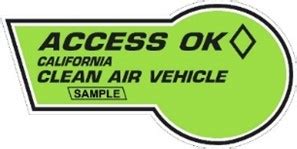Driving Change: How California’s Clean Air Vehicle Rebate is Transforming the Auto Industry
The automobile industry is undergoing a significant transformation as environmental concerns and government regulations drive innovation and sustainability. One of the most impactful initiatives in this realm is California’s Clean Air Vehicle Rebate Program (CAVR). This program is designed to incentivize the adoption of cleaner vehicles, ultimately enhancing air quality while stimulating economic growth. In this article, we will explore how the CAVR is reshaping the auto industry, the benefits it brings to consumers, and its implications for the future of transportation.
The Importance of Clean Air Vehicle Rebate Program
California’s air quality is among the most challenging in the nation, with smog and air pollution posing significant public health risks. To tackle these issues, the California Air Resources Board (CARB) launched the Clean Air Vehicle Rebate Program in 2010. The program is designed to promote zero-emission vehicles (ZEVs), plug-in hybrids, and other environmentally friendly vehicles through financial incentives.
By offering rebates that can reach up to $7,000 depending on the type of vehicle and the applicant’s income level, California aims to lower the barrier to entry for consumers who wish to transition to cleaner vehicles. The program is not only a boon for the environment but also serves as a catalyst for the auto industry to pivot towards electric and hybrid vehicle production.
Impact on the Auto Industry
The Clean Air Vehicle Rebate Program has had a significant impact on automakers, compelling them to adapt their strategies to remain competitive in a rapidly evolving market. The financial incentives provided by the CAVR have accelerated the production and adoption of electric vehicles (EVs) and hybrids.
Major auto manufacturers such as Tesla, Nissan, and Chevrolet have expanded their electric vehicle lineups significantly over the past few years. The presence of financial incentives encourages manufacturers to invest in research and development related to battery technology and vehicle efficiency. As a result, we see a continual improvement in vehicle range, affordability, and overall performance.
The rebates also lower the effective cost of electric vehicles, making them more attractive to consumers who are financially cautious. This has led to an encouraging upwards trend in EV sales, fulfilling manufacturers’ targets and enhancing their reputations as environmentally responsible companies.
Benefits to Consumers
The benefits of the Clean Air Vehicle Rebate Program extend beyond environmental improvements; they directly affect consumers’ wallets as well. With rebates in place, consumers can enjoy substantial savings when purchasing new electric vehicles.
Moreover, electric vehicles typically incur lower operating costs than their gasoline-powered counterparts. EVs generally have fewer moving parts, which translates to reduced maintenance expenses. In addition, California offers various tax incentives for EV owners, including tax exemptions and reduced registration fees.
Many consumers also enjoy the added benefit of driving in carpool lanes, regardless of the number of passengers in their vehicle. This perk can significantly reduce commute times, adding a further incentive to make the switch to clean air vehicles.
Air Quality Improvements
One of the primary goals of the Clean Air Vehicle Rebate Program is to improve air quality in California. The program contributes to the reduction of harmful emissions that contribute to smog and respiratory diseases, yielding public health benefits.
According to studies, the adoption of electric vehicles is projected to result in a significant decrease of greenhouse gas emissions across the state. Improved air quality not only enhances the quality of life for California residents but also aligns with the state’s broader environmental goals, such as achieving carbon neutrality by 2045.
The Future of the Auto Industry
The Clean Air Vehicle Rebate Program is also setting a precedent for how other states might approach vehicle emissions and climate initiatives. As California continues to lead the way in EV adoption and sustainable transportation, other states are likely to follow suit, creating a ripple effect across the nation.
This transformation will not be limited to just vehicle manufacturing. The growth of electric vehicles will necessitate further investment in charging infrastructure, renewable energy, and smart grid technology. The CAVR can be seen as a driving force behind a shift towards more sustainable energy solutions, laying the groundwork for a cleaner, greener future.
Conclusion
California’s Clean Air Vehicle Rebate Program represents a significant leap toward cleaner air and a sustainable future. By incentivizing the adoption of zero-emission vehicles, the program is transforming the auto industry, enhancing public health, and paving the way for further innovations in vehicle technology. As more consumers choose to invest in electric vehicles, and as the auto industry continues to evolve, the collective effort will contribute to a healthier planet and a more sustainable automotive landscape. Ultimately, the CAVR serves as a powerful model for other states and countries aiming to combat air pollution and climate change, reinforcing the critical importance of governmental support in driving positive change.
FAQs
1. What types of vehicles are eligible for the Clean Air Vehicle Rebate?
The program includes zero-emission vehicles (ZEVs), plug-in hybrids, and fuel cell vehicles. Each category has its rebate amount, which varies.
2. How much can I receive through the Clean Air Vehicle Rebate Program?
The rebate amount can reach up to $7,000, depending on the type of vehicle and the applicant’s income level.
3. How do I apply for the rebate?
Applications can be submitted online through the California Air Resources Board’s website. You will need to provide vehicle information and proof of ownership.
4. Is the Clean Air Vehicle Rebate available to all California residents?
Yes, any California resident who meets the eligibility criteria can apply, although income restrictions may apply for certain rebate amounts.
5. Can the rebate be combined with other incentives?
Yes, consumers may combine the CAVR with other state or federal incentives, which can further reduce the effective cost of purchasing an electric vehicle.
Download California Clean Air Vehicle Rebate
